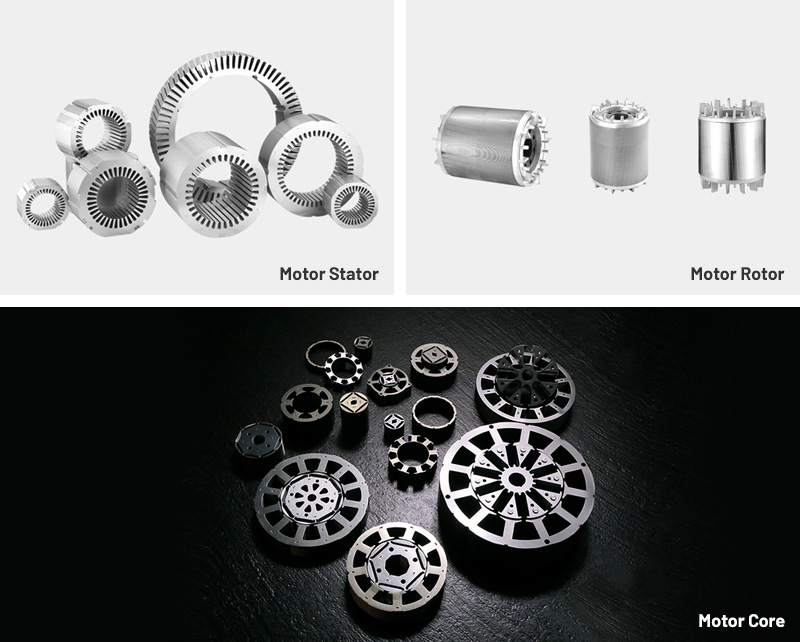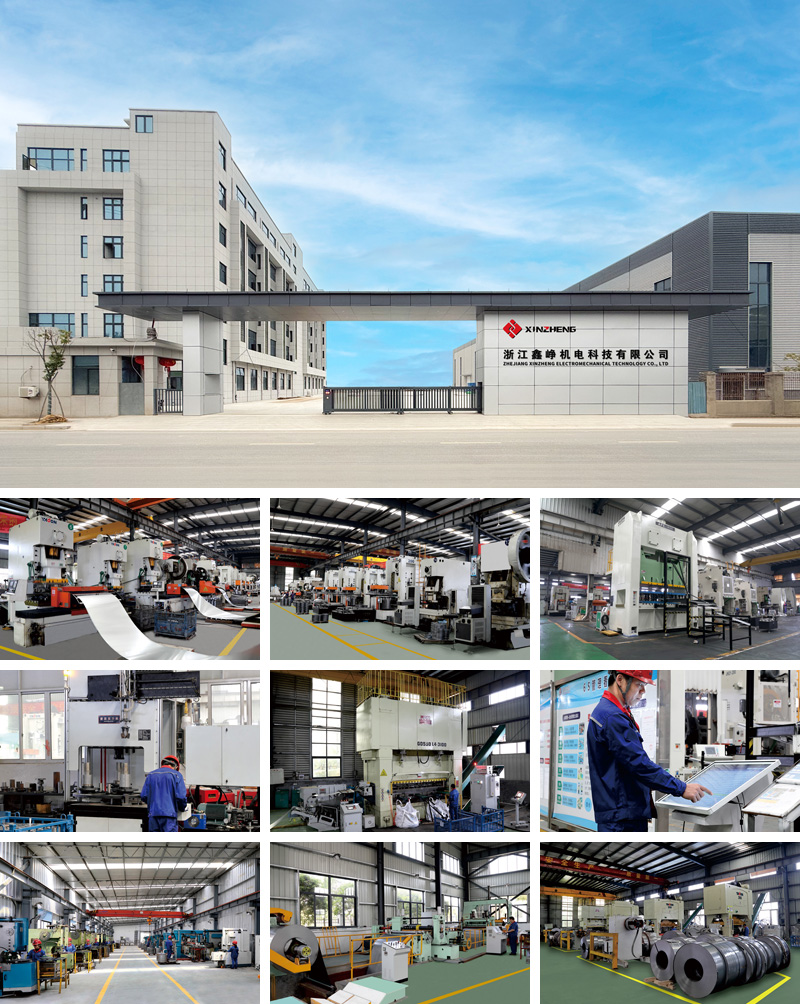The global shift toward high-efficiency industrial motors has accelerated due to stricter energy-efficiency regulations, higher electrification rates in manufacturing, and the expansion of automated production lines. The YE4 series—aligned with China’s GB 18613 efficiency standard and comparable to IE4 international levels—has become a preferred choice for facilities seeking reduced operating costs and improved system reliability.
As motors operate under increasingly demanding conditions, one component comes under particular scrutiny: high-temperature resistant YE4 motor laminations. These laminations, forming the stator and rotor cores, determine magnetic performance, thermal stability, and long-term motor efficiency. With many YE4 systems used in heavy-duty sectors such as mining ventilation, petrochemical pumps, precision compressors, and HVAC drives, the need for laminations capable of withstanding elevated thermal loads continues to grow.
Motor laminations are thin sheets of electrical steel stacked to minimize eddy current losses. For YE4 motors—designed to achieve extremely low loss levels—the lamination grade, thickness tolerance, surface insulation, and punching precision directly influence the motor’s efficiency class.
High-temperature resistant YE4 motor laminations must satisfy additional requirements:
Thermal endurance: Ability to maintain mechanical and magnetic stability at winding-temperature rises exceeding 120–150°C, depending on insulation class.
Low core loss at elevated temperatures: Magnetic steels exhibit rising loss values as temperature increases; premium coatings and improved silicon content help mitigate this.
Dimensional stability: Laminations must resist warping or stress-relief deformation during annealing or long service periods.
Coating durability: Organic or inorganic insulation films must not degrade or flake under thermal cycling.
Unlike general-purpose laminations, high-temperature versions prioritize long-term stability under fluctuating heat loads, preventing efficiency drift and reducing motor noise caused by magnetostriction changes.
Most YE4 laminations use non-oriented silicon steel (NOES) with optimized silicon content (2.5–3.2%). For high-temperature resistant variants, manufacturers increasingly adopt:
High-silicon NOES for lower hysteresis losses
Thin-gauge steels (0.35 mm or 0.30 mm) to minimize eddy currents
Advanced grain refinement to improve permeability at high operating temperatures
Some motors with extreme duty cycles utilize semi-processed electrical steel, allowing custom annealing profiles that balance core loss and mechanical strength.
High-temperature resistant coatings are critical. Industry options include:
Inorganic phosphate coatings for superior heat tolerance
Hybrid organic–inorganic films offering enhanced dielectric strength
High-temperature polymer coatings that maintain adhesion under thermal cycling
Coating uniformity is essential. Uneven film thickness can lead to localized hot spots, increased loss, or lamination welding during punching.
Manufacturing quality strongly affects YE4 motor efficiency:
High-precision, low-burr stamping dies prevent edge damage that increases core losses.
Laser cutting is used for prototypes or specialized small batches; however, heat-affected zones must be controlled.
Progressive die systems ensure consistent stack alignment and minimal dimensional variation.
Mechanical stresses induced during punching are often relieved via stress-relief annealing, restoring magnetic performance.
Stacking techniques include:
Interlocking laminations
Welding or cleating
Core bonding using adhesives or varnish
For high-temperature resistant YE4 motor laminations, bonding agents must retain structural integrity at elevated temperatures without altering magnetic pathways.
As temperature rises, physical changes in the steel matrix increase hysteresis and eddy current losses. The lamination grade must maintain stable performance between 100°C–180°C, depending on usage.
Burrs introduce additional magnetic paths, causing localized heating. OEMs typically specify burr heights below 10–20 microns for YE4 motors.
Non-flat laminations reduce stack factor and decrease motor efficiency. Stress-released steel significantly improves magnetic permeability.
Coatings should withstand at least Class F (155°C) or Class H (180°C) thermal ratings without discoloration or cracking.
Tight tolerances ensure balanced magnetic fields, reducing torque ripple and noise.
Choosing the right lamination supplier is crucial for meeting YE4 performance targets:
Material origin and certification
– Reliable sourcing from leading electrical steel mills ensures traceability and consistent core-loss characteristics.
Punching and tooling capabilities
– Suppliers should invest in CNC machining, high-speed presses, and in-house die maintenance.
Advanced coating options
– Ability to apply high-temperature coatings in controlled environments.
Testing and metrology infrastructure
– Core-loss testing at multiple frequencies and temperatures
– Dimensional scanning and burr-height measurement
Batch consistency and logistics stability
– For large motor OEMs, consistent performance across production batches is essential to meeting YE4 certification requirements.
Despite technology progression, several challenges persist:
Rising costs of premium electrical steels, especially thin-gauge NOES
Dimensional distortion after annealing or during long service conditions
Coating delamination under repetitive thermal cycling
Variability in stamping-die quality among regional suppliers
Inconsistent magnetic properties between steel coils, requiring batch testing
These pain points underscore the importance of rigorous quality assurance and supplier evaluation.
Continuous-duty operations often experience high winding temperatures. High-temperature resistant YE4 motor laminations maintain efficiency and minimize thermal losses.
Dust, heat, and variable loads demand durable lamination coatings with stable thermal resistance.
Hazardous environments typically require motors with higher service factors and improved thermal endurance.
Large cooling towers and industrial chillers run for long hours; improved lamination stability lowers operational energy consumption.
Machine tools operating at high speeds benefit from reduced magnetic noise and more consistent torque.
YE4 laminations are beginning to integrate features traditionally associated with IE5 motors, such as:
reduced gauge thickness
enhanced chromium or aluminum alloying
specialized insulation systems
While still costly, these materials offer extremely low core losses and excellent high-temperature behavior.
AI-assisted (machine-learning) tooling optimization, inline defect imaging, and automated burr measurement improve batch consistency.
Low-VOC coatings, recyclable steel sources, and controlled annealing atmospheres align with global sustainability goals.
As governments tighten industrial energy standards, YE4 and future YE5 motors will require even higher-performance lamination technologies.
Q1. What temperature levels can high-temperature resistant laminations withstand?
Most are designed for Class F or Class H thermal systems, meaning they can handle 155–180°C without significant degradation.
Q2. Do thinner laminations always mean higher efficiency?
Not always. While thin gauges reduce eddy currents, they may decrease stacking factor or complicate punching. Material selection must balance electrical and mechanical properties.
Q3. What causes lamination coatings to fail?
Common causes include improper curing, thermal cycling, mechanical abrasion during stacking, or incompatible varnishes.
Q4. How do high-temperature resistant laminations improve YE4 motor lifespan?
They reduce thermal aging of insulation systems, maintain low core loss over time, and minimize mechanical deformation.
Product Category

Comprehensive Strength


Copyright © Zhejiang Xinzheng Electromechanical Technology Co., Ltd. All Rights Reserved.
This website uses cookies to ensure you get the best experience on our website.